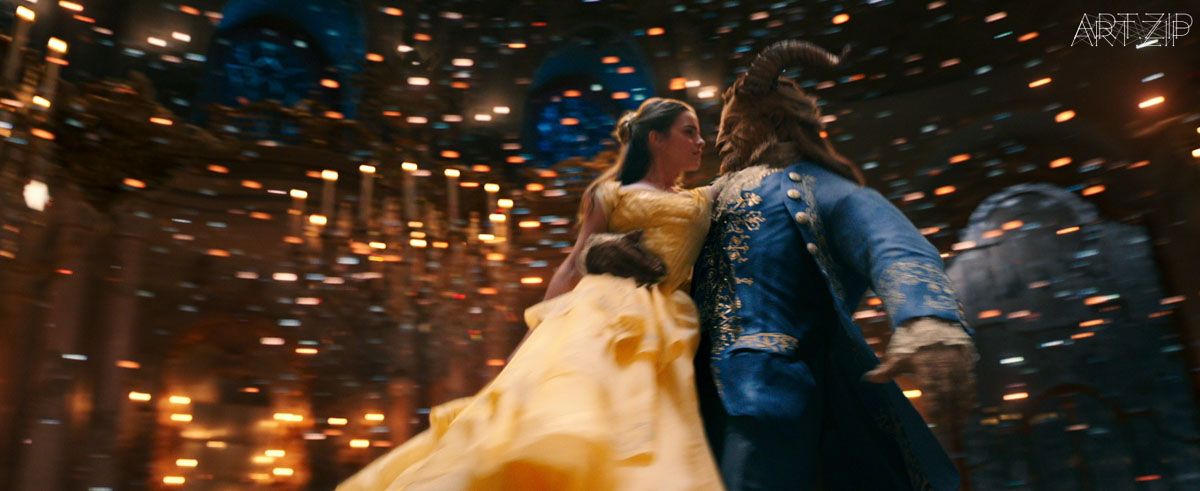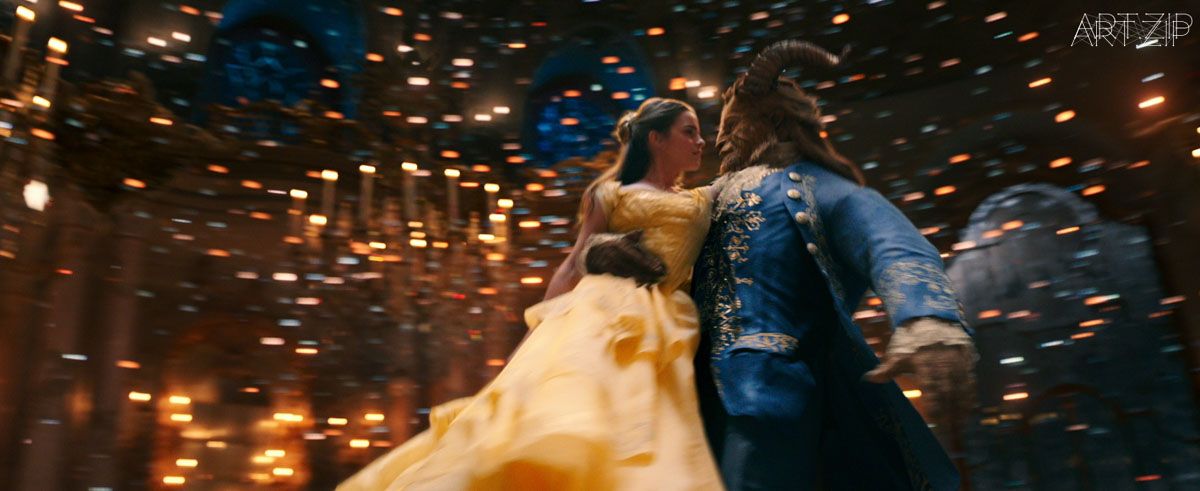

Belle (Emma Watson) comes to realize that underneath the hideous exterior of the Beast (Dan Stevens) there is the kind heart of a Prince in Disney’s BEAUTY AND THE BEAST, a live-action adaptation of the studio’s animated classic directed by Bill Condon.
For the full version go to Re-Sounding Blog A space for thinking about sound and audiovision.
In a world of recessions, uncertainty and extremism, the cinema has turned to a familiar machine. The remake or reboot has been experiencing a renaissance in recent years, including Point Break (1991 and 2015) and Carrie (1976 and 2013). Whilst these remakes aren’t always successful (one only needs to recall Footloose 2011, and Psycho 1998), they enable a cinema-goer to see something comfortingly familiar, whilst still having the luxury of seeing a new film. These remakes are assured of some box office success, a certain amount of people will see the film just to see what this new version is like. In terms of advertising a remake is a fairly easy sell, people know the storyline, they know vaguely what sort of cinema package they’re getting.
What can this rise in the remake or reboot tell us about the current state of Hollywood and the appetite of cinema? Is it a symptom of a lack of good filmmaking? There’s no shortage of decent, new stories, but there seems to be an appetite from movie studios to remake old ones (the news of the Matrix reboot by Warner Brothers seems to support this). An easy way to explain away this escalation would be to cite the ease of advertising and the assurance of some viewing success.
Disney has also joined the remake boom. Disney’s model has been to film live action versions of classic animated musicals. This has currently included Cinderella (1950, 2015), The Jungle Book (1967, 2016) and Beauty and The Beast (1991, 2017). There are also plans to remake The Lion King (1994), Dumbo (1941), Mulan (1998), Peter Pan (1953) and The Little Mermaid (1989). The live action remakes of Cinderella and The Jungle Book were relatively successful at the box, making 543.5 million USD and 966.6 million USD respectively. So, there is clearly an appetite for these films and one that extends beyond a morbid curiosity of: “I wonder what they did to my favourite childhood film”.
The films that are being remade are part of Disney’s most successful body of work: the animated musical. As a genre of cinema, the musical extends and develops the already polished world of the film. When discussing the music of 1930s and 1940s in her book ‘Strains of Utopia: Gender, Nostalgia, and Hollywood Film Music’, Caryl Flinn states that music has been assigned a utopian function: “Music extends an impression of perfection and integrity in an otherwise imperfect, unintegrated world.”
The utopian function that musicals perform are easy to see in live action films such as The Wizard of Oz (1939) and Singin’ in the Rain (1952). The songs are woven seamlessly into the spoken word so that bursting into song appears normal. In the world of the musical, everything will be alright, boy will end up with girl, because people are singing and dancing. The world of a musical is a sugar-coated world, it often looks similar to our own but it is sprinkled with pixie dust. It is an idealised cinematic portrayal of our world and our stories and it is through music that this utopian mode is extended.
For the full version go to Re-Sounding Blog A space for thinking about sound and audiovision.
Jesc Bunyard

